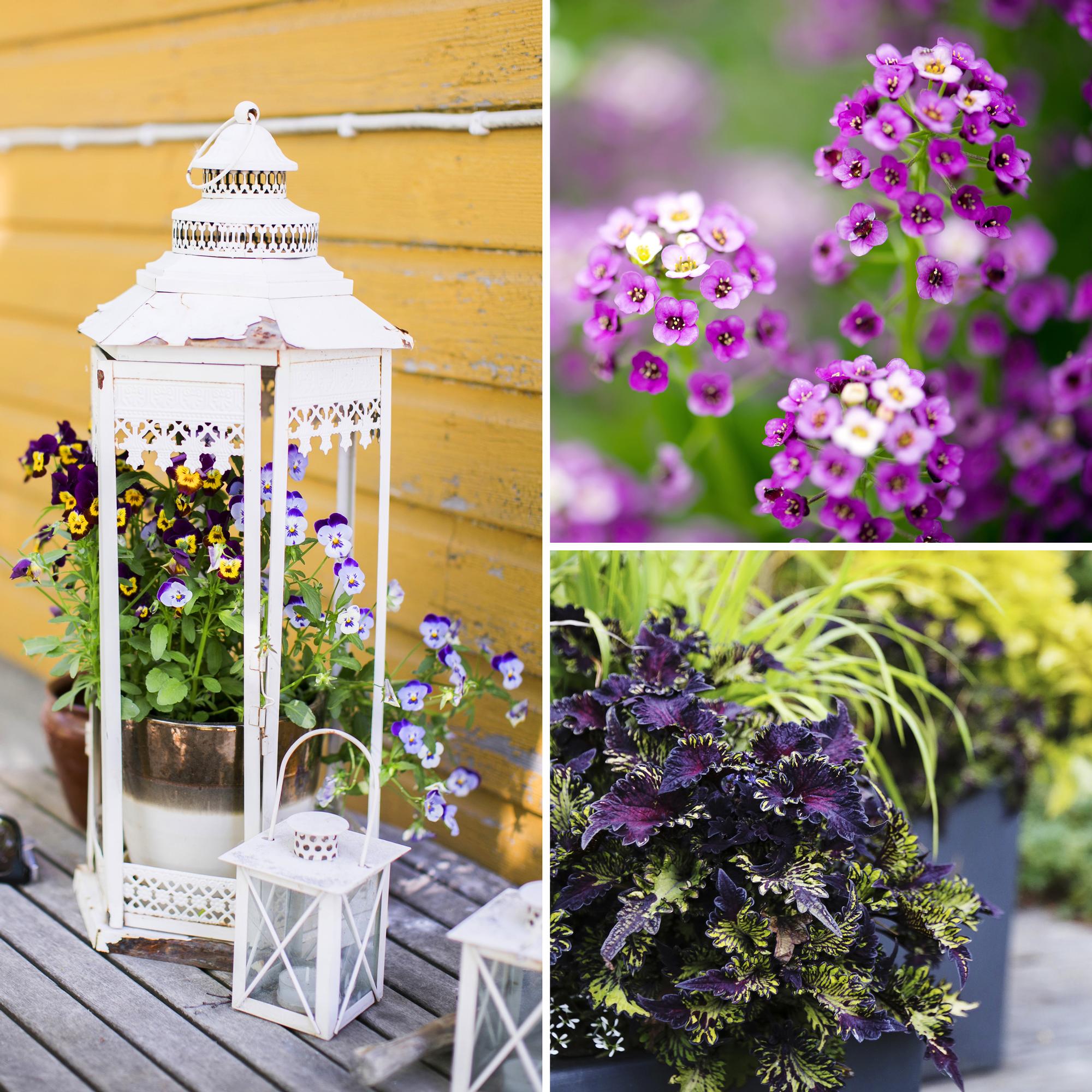
Easy summer flowers for partial shade
Partial shade is an ideal spot for many summer flowers, since they’re shielded from blazing sun yet still get plenty of light. Choose your favorites from these lovely, easy summer flowers for partial shade!
Summer flowers for partial shade
1. Pansy
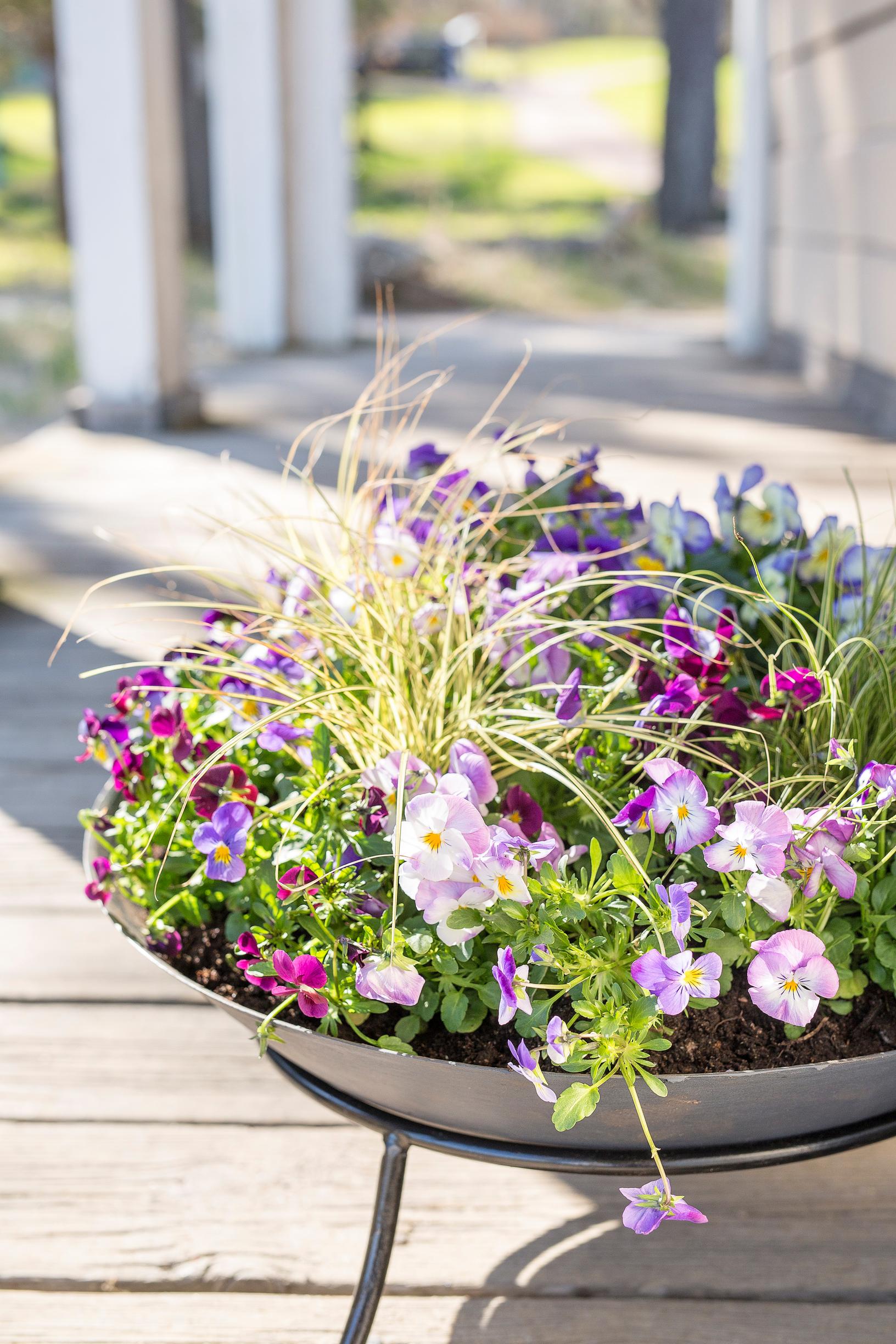
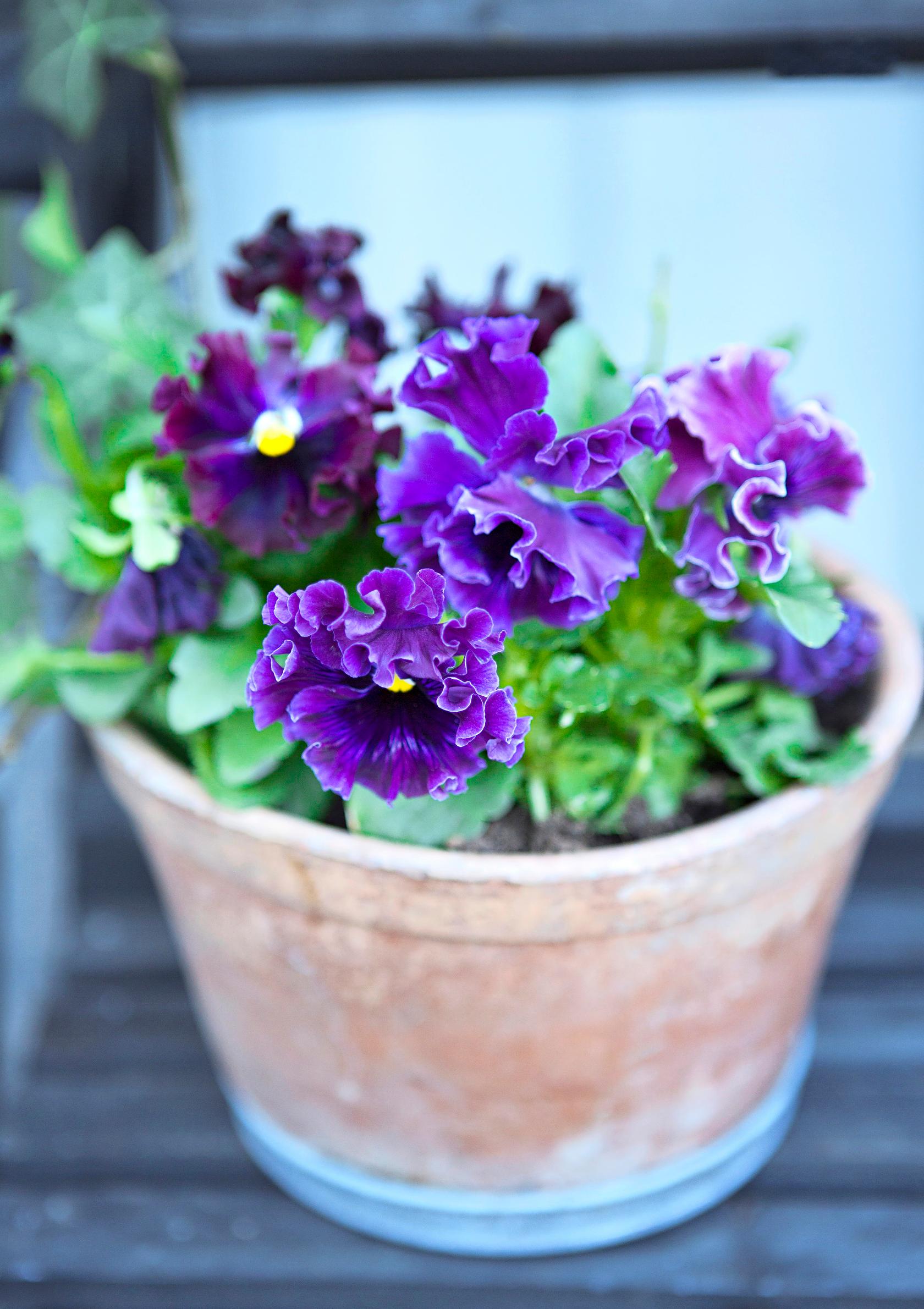
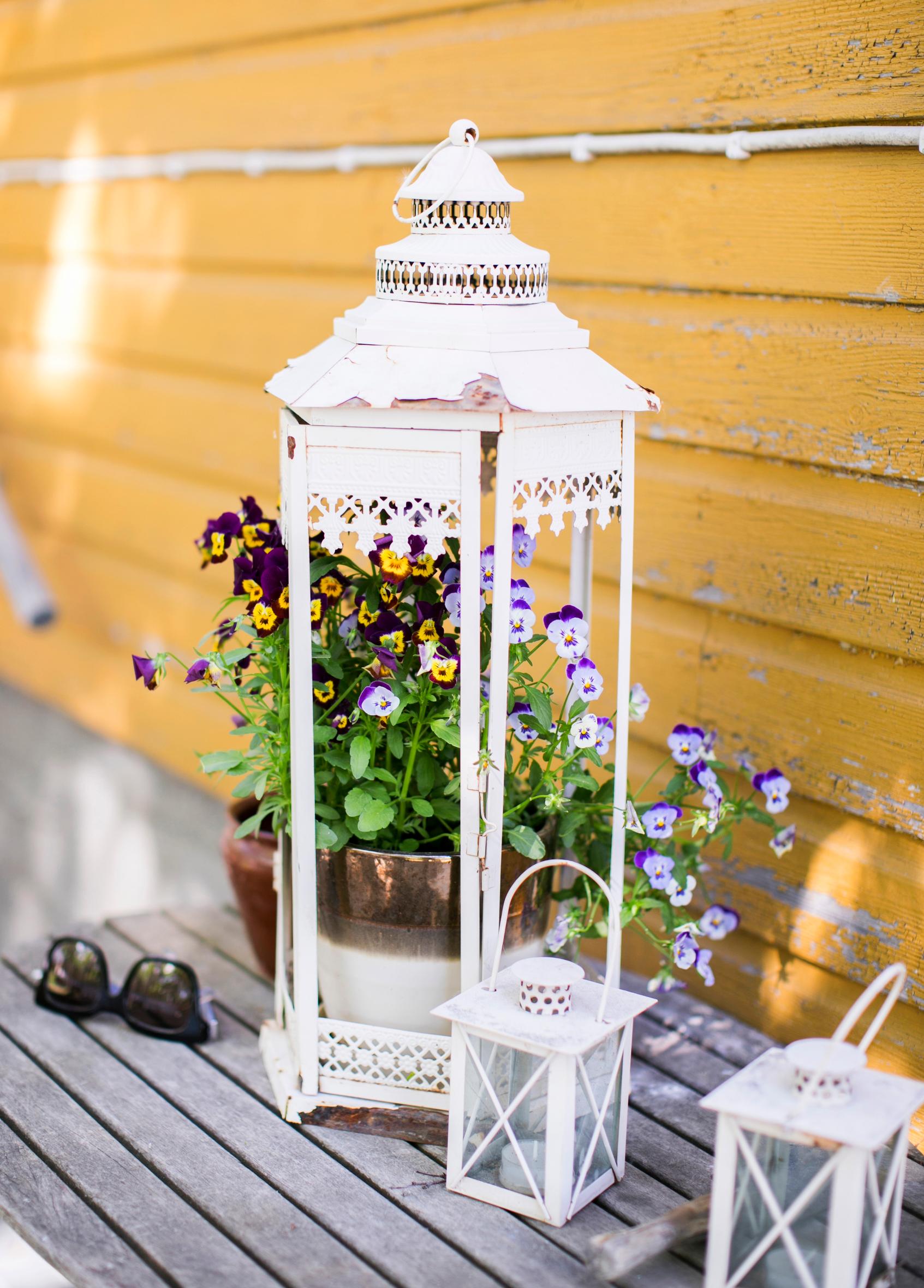
Pansies (Viola x wittrockiana group and Viola cornuta) are excellent summer flowers, as they kick off the entire summer flower season and handle even chilly spring nights with ease.
A pansy blooms best in a bright or partially shaded spot, but it can also thrive in shade or even scorching sun. Pinch off faded blooms with their stems regularly to ensure new buds form steadily. Read more about caring for pansies here. As summer progresses, pansy stems may grow leggy. In that case, you can cut the pansy back [in Finnish]. New flowering stems will develop in about two to three weeks.
If you’d like pansy seedlings to sprout in your yard, simply drop the spent blooms on the ground. The horned violet, at least, will produce countless tiny seedlings from the seeds that fall to the soil by the following spring.
Height: 20–25 cm.
Growth habit: forms mounds.
2. Painted nettle (Coleus)
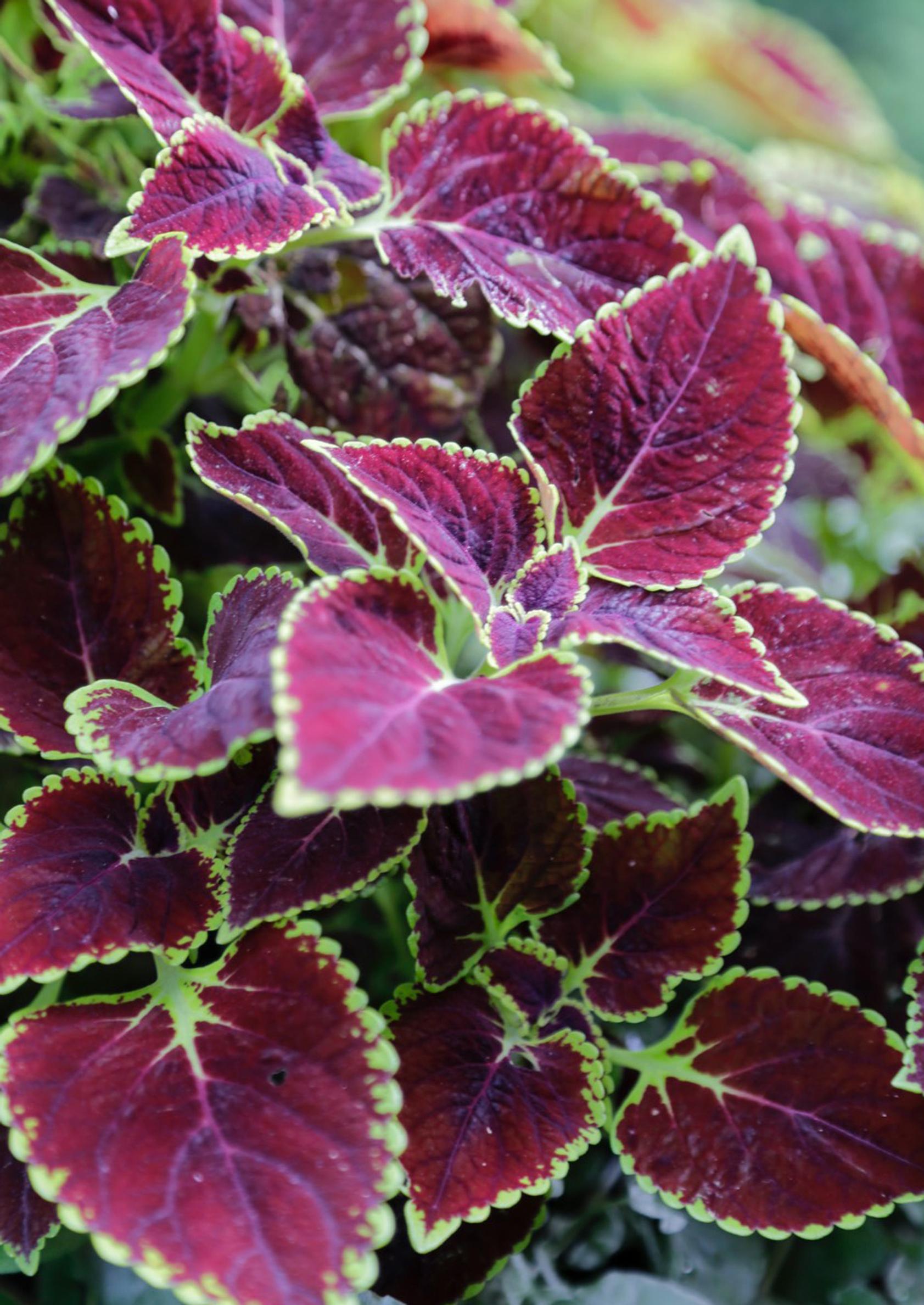
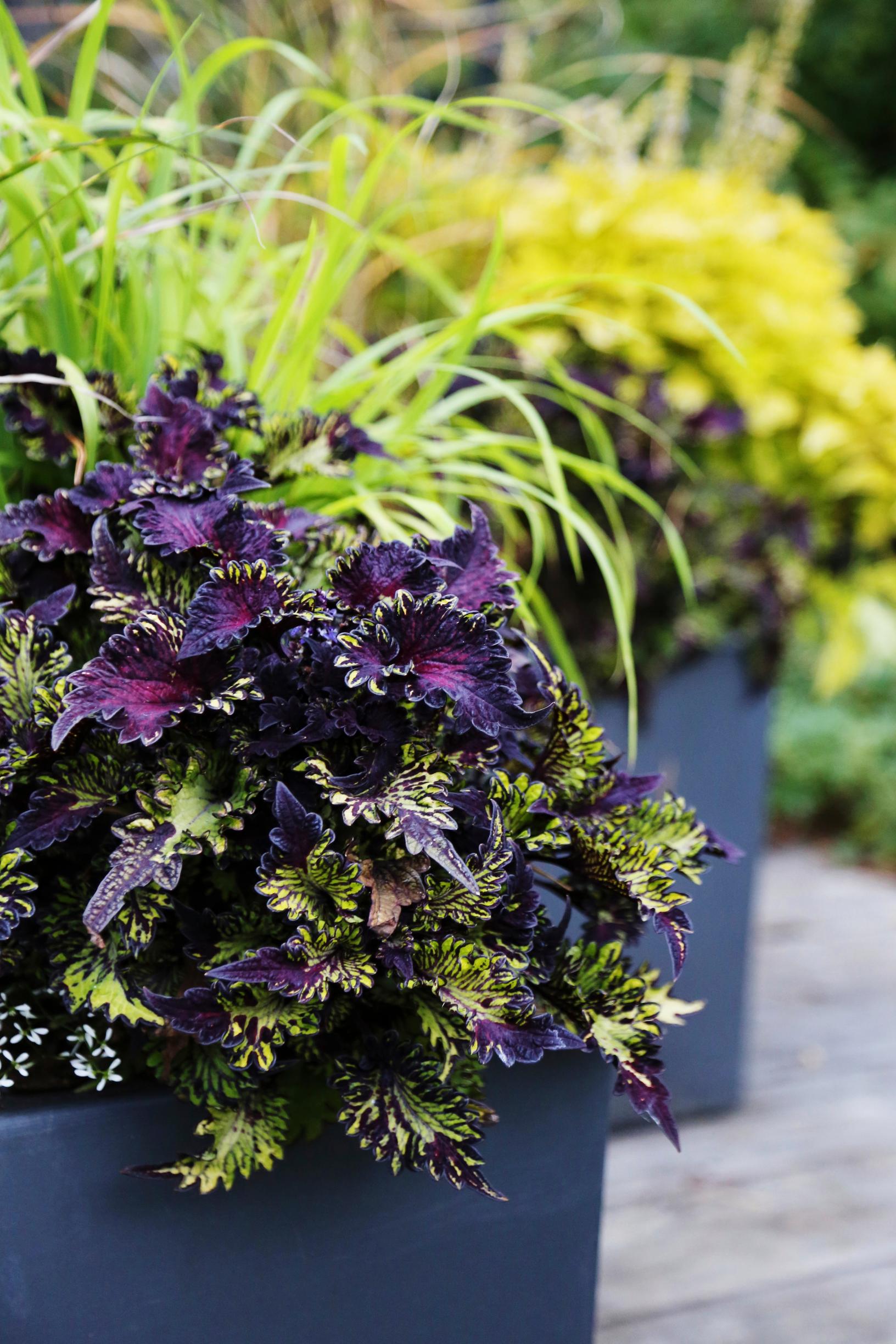
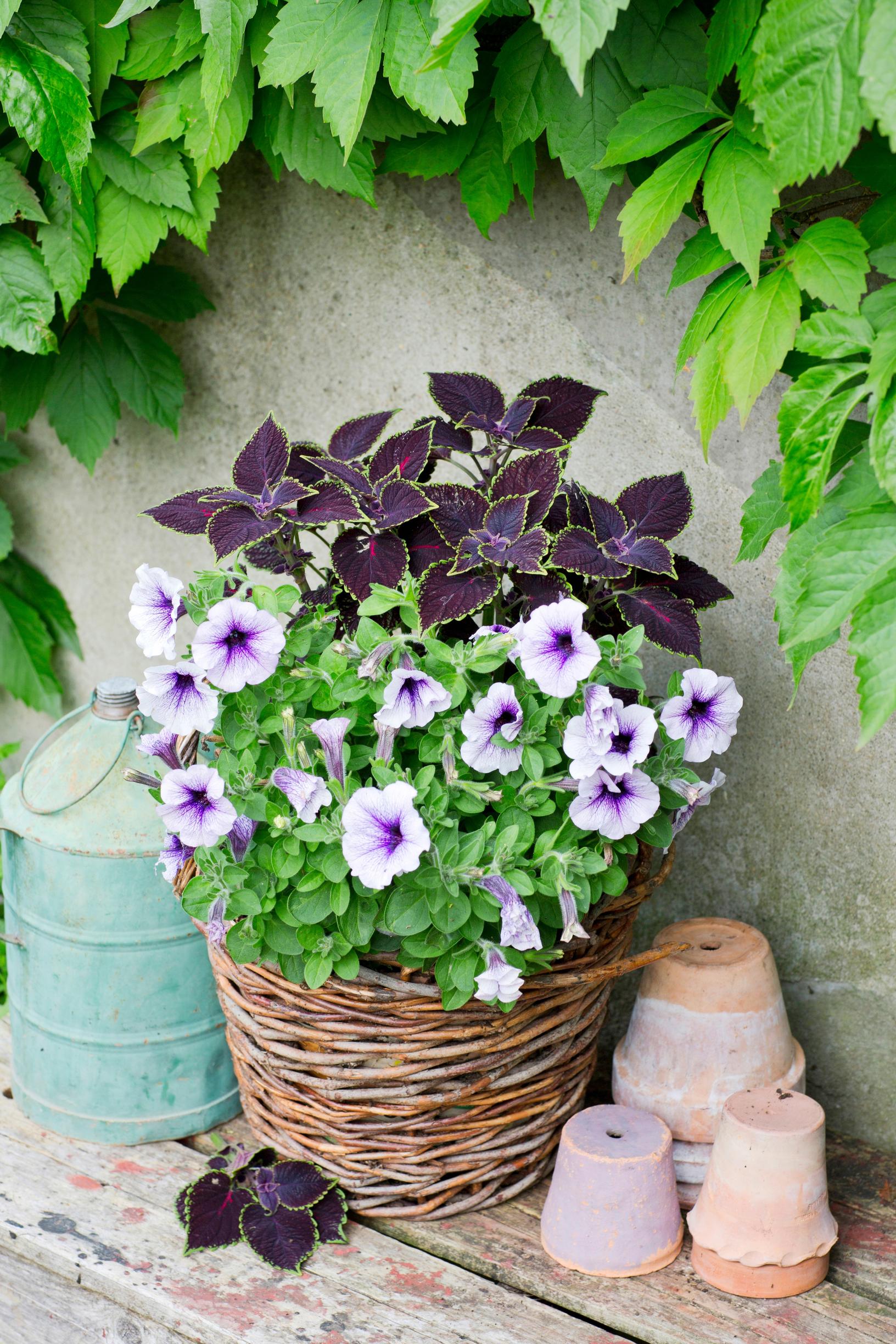
The charm of the painted nettle (Solenostemon scutellarioides Rainbow or Wizard varieties) lies in its gorgeous leaves rather than its blooms. Painted nettle does best in partially shaded or sunny locations. In intense heat, its foliage color can fade, and it may struggle if the soil dries out too quickly.
Use fertilizer formulated for flowering plants that doesn’t contain too much nitrogen, as nitrogen can dull the leaf color. Flowering also affects leaf vibrancy—so pinch off flower buds as soon as they start forming.
You can plant painted nettle alongside showy flowering plants, such as flowering tobacco or pink argyranthemum. It also forms a lovely arrangement paired with ornamental grasses.
In fall, move the plant indoors to a cool, bright spot. You can also propagate painted nettle easily from cuttings [in Finnish].
Height: 30–50 cm.
Growth habit: upright.
3. Flowering tobacco
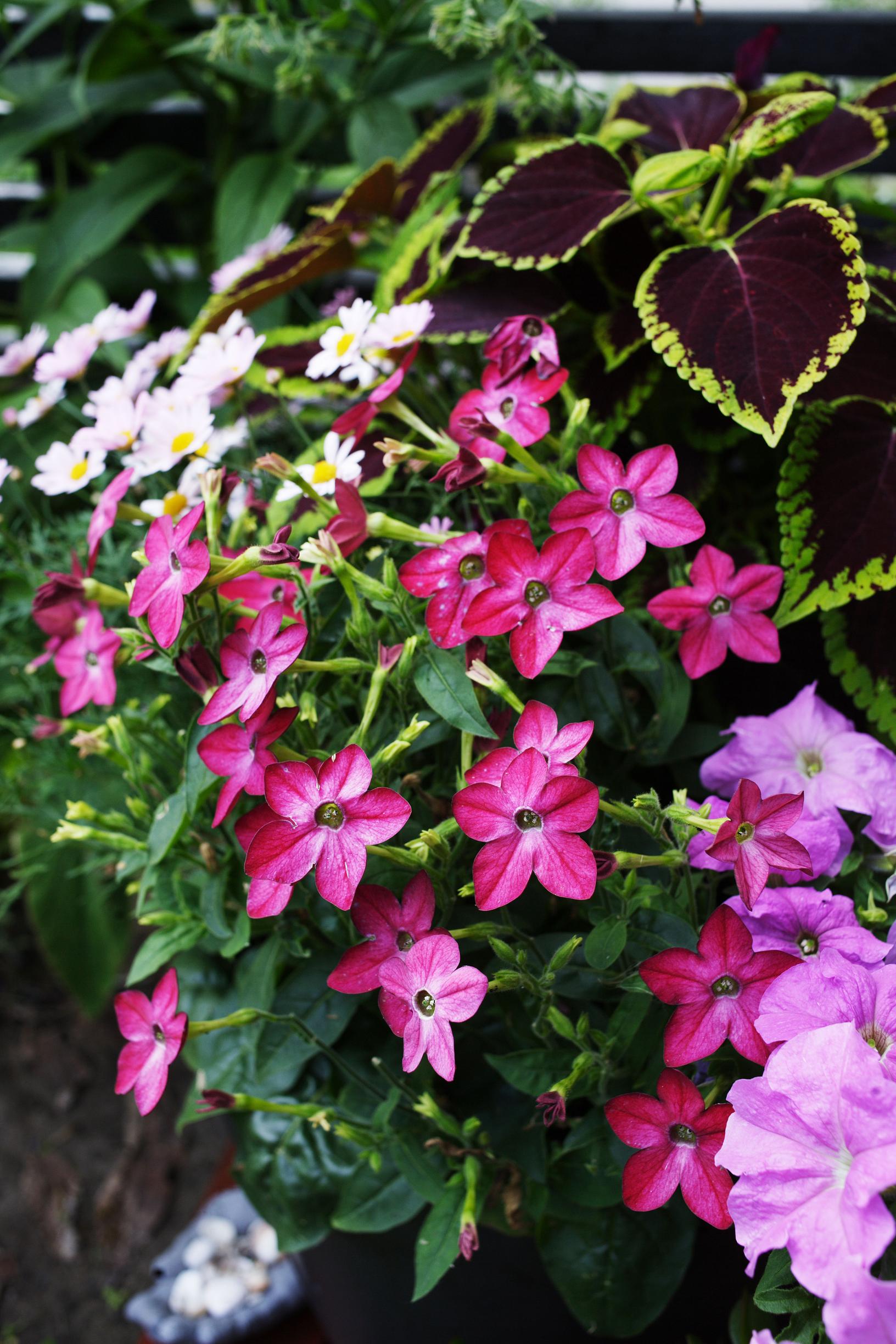
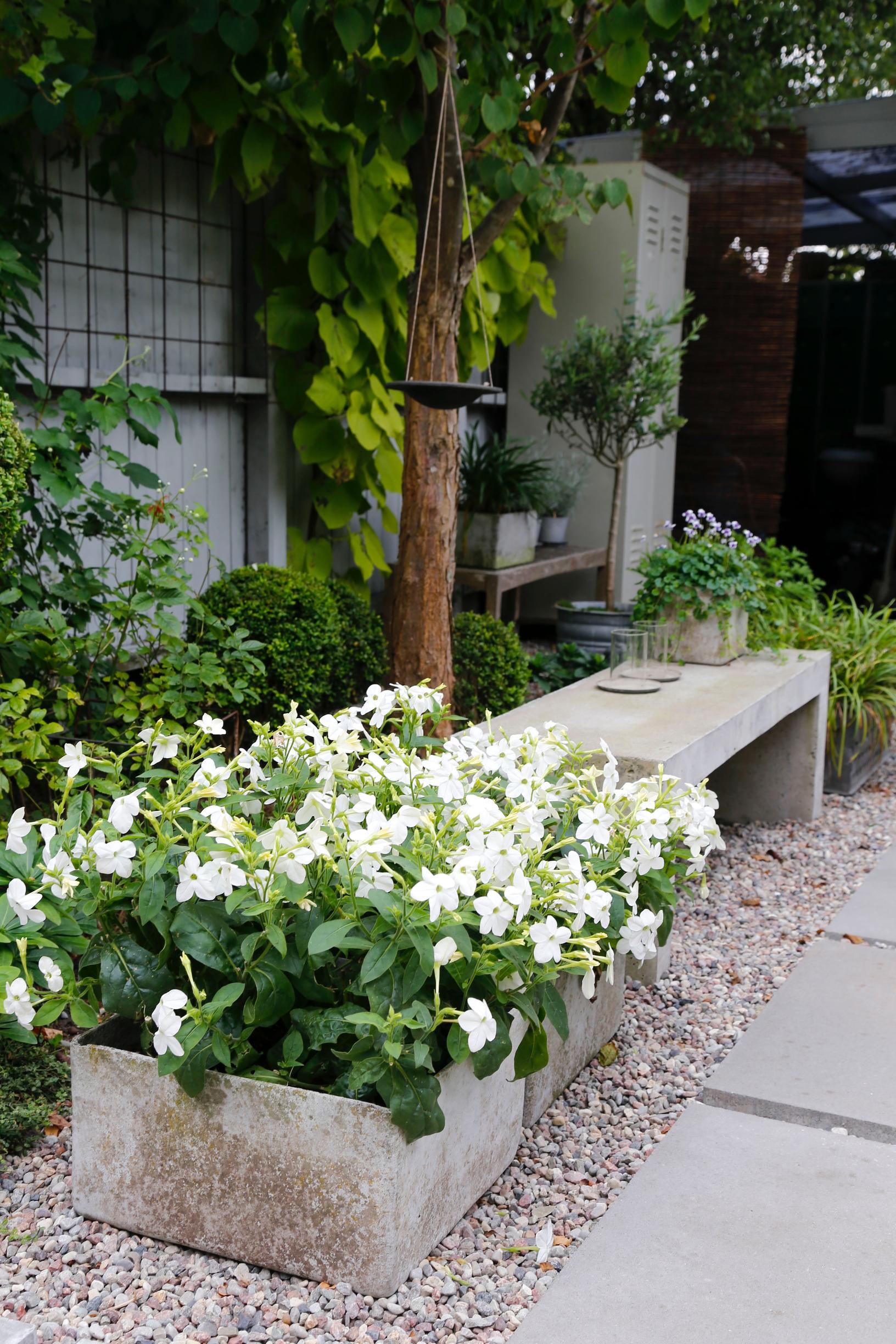
Flowering tobacco (Nicotiana Sanderae group) does well in both sun and partial shade. The most important factor is a warm, sheltered location. Plant it in nutrient-rich potting mix for summer flowers, and water and fertilize regularly. Move the seedlings outdoors only after any risk of frost has passed.
If the plant develops long stems, provide support to be on the safe side. In a windy spot, the stems may topple or break. Remove spent flowers regularly so the plant doesn’t use its energy on seed production. If, on the other hand, you want your own seeds, harvest them in the fall and sow them early the following spring. It’s unlikely that the seedlings will be exactly like the parent plant, but experimenting is all part of the fun!
Height: 20–100 cm.
Growth habit: upright.
4. Blue lobelia
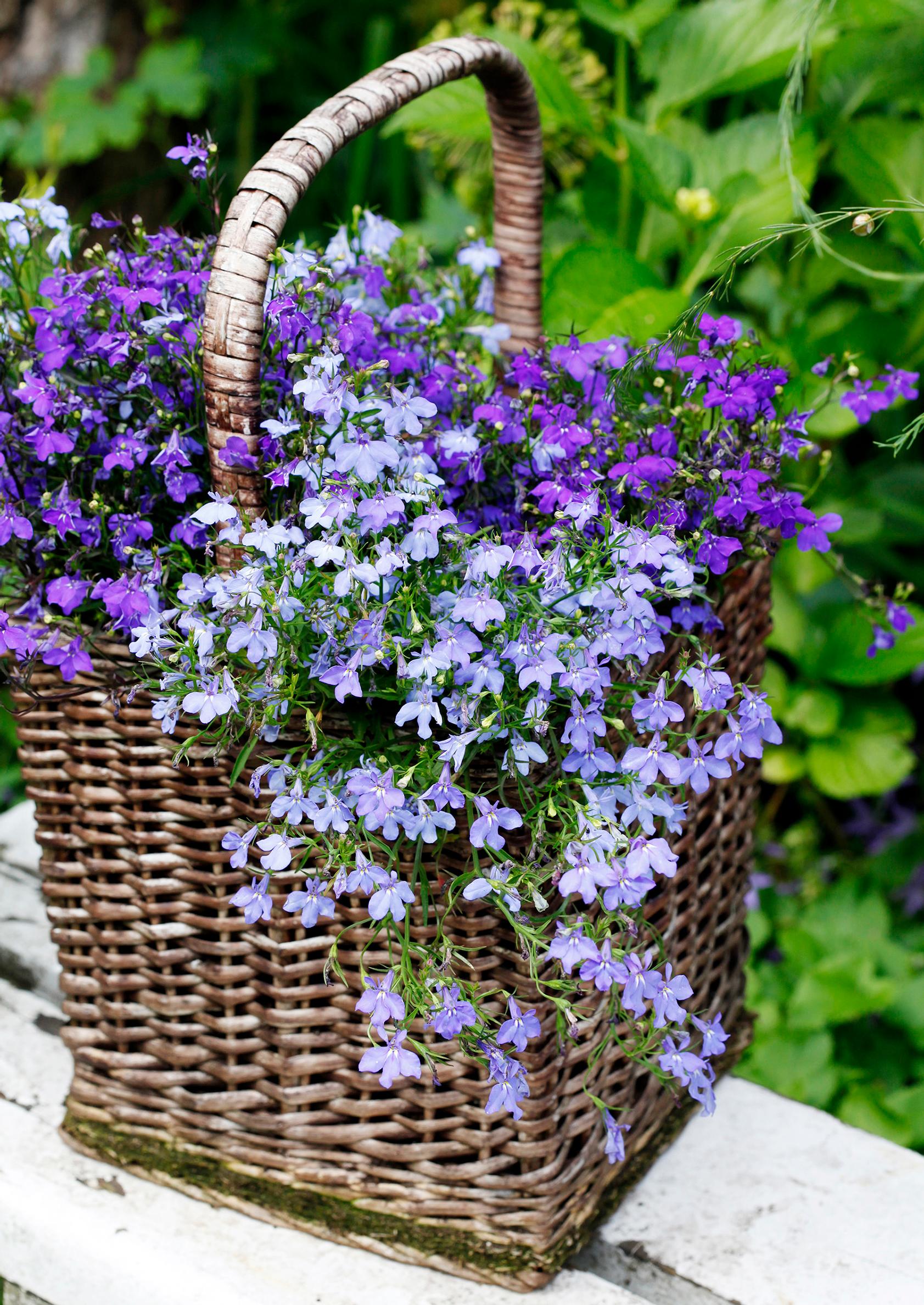
Blue lobelia (Lobelia erinus) is one of the most popular summer, which is no surprise given how intensely colored its blooms are.
Lobelia is a versatile flower that thrives in anything from shade to full sun. However, it won’t bloom as profusely in deep shade. In intense sun, be sure to water consistently so the plant doesn’t wilt. Blue lobelia is at its best in partial shade, where its deep purple or sky-blue blossoms really stand out. It also does well in windy spots, since its flexible stems won’t snap in a breeze.
Use a diluted fertilizer every time you water to keep the plant thriving and the blooms coming. If it stops flowering, you can cut it back, and new shoots will soon form buds. One great thing about lobelia is that even though it blooms profusely, you don’t need to deadhead it. The spent flowers simply drop off on their own.
Height: 10–15 cm.
Growth habit: mound-forming or trailing.
5. Nasturtium
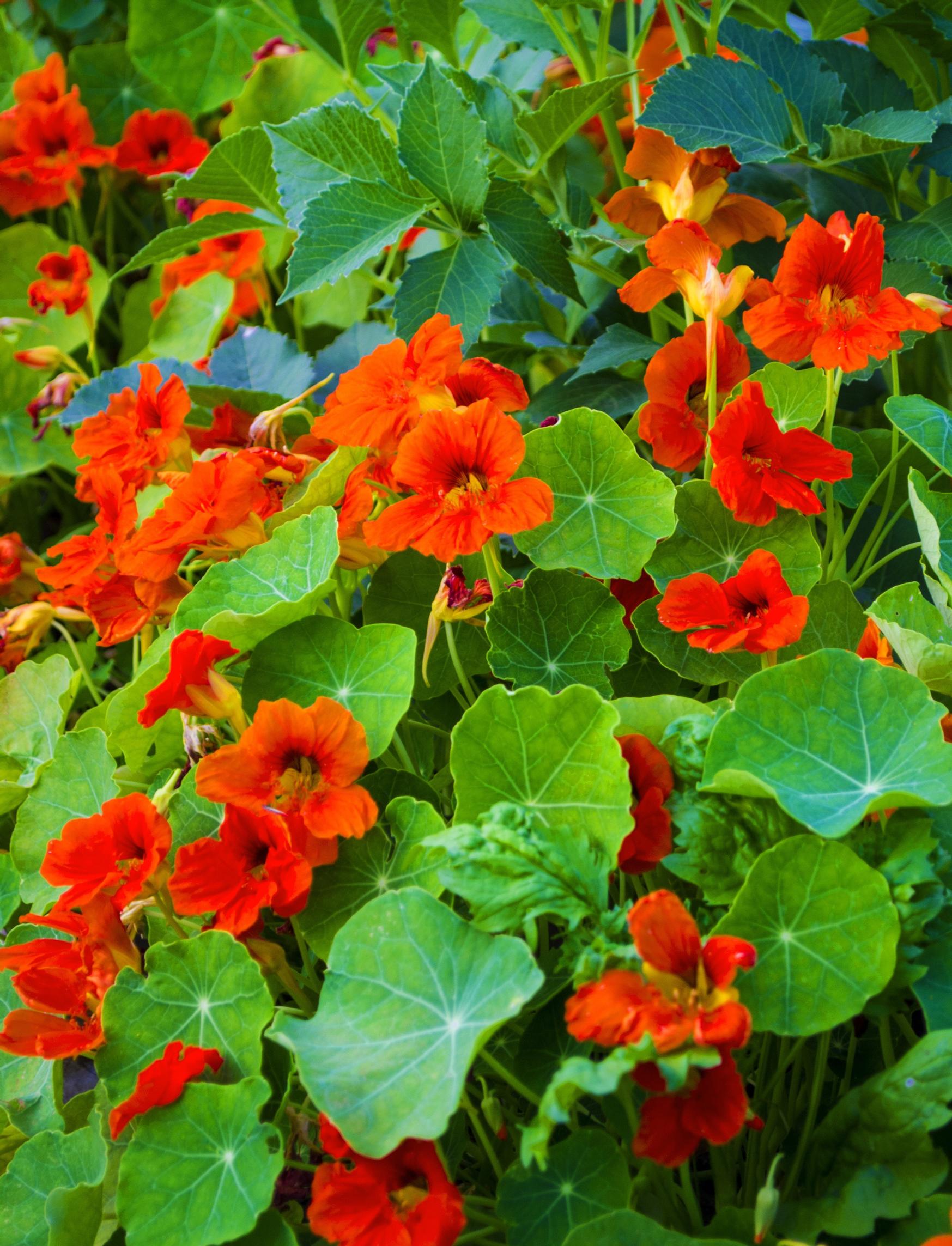
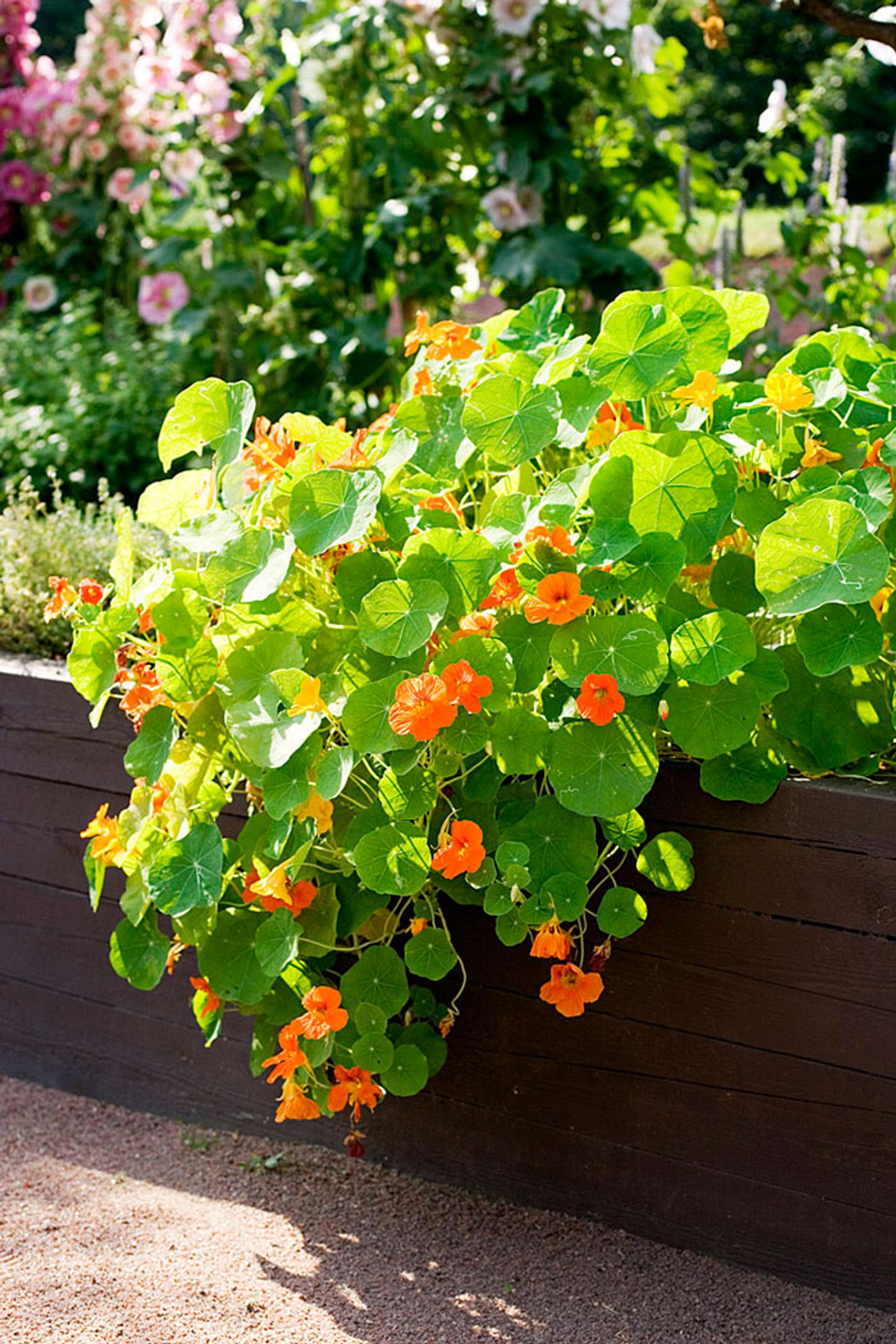
Nasturtiums (Tropaeolum sp.) can be either bushy or climbing. They do well in sunny, partially shaded, and even fairly shady locations, though they’ll bloom less in darker spots. If you plant them in a very sunny spot, be extra careful with watering. Nasturtiums thrive best in partial shade, where their flower colors truly stand out.
Move nasturtium seedlings outside only after the risk of frost has passed. Since their stems hold a lot of water, they’re more prone to frost damage. Their succulent leaves can also attract aphids, so spray any aphid-infested plants with cold water. Read more about eco-friendly ways to control aphids.
Fertilize nasturtiums regularly with a mild fertilizer solution. Over-fertilizing will result in abundant leaf growth at the expense of blooms. If the foliage becomes too dense and threatens to overshadow the flowers, pinch off a few leaves here and there.
Height: 20–30 cm or 200–300 cm.
Growth habit: mound-forming or climbing.
6. Heliotrope
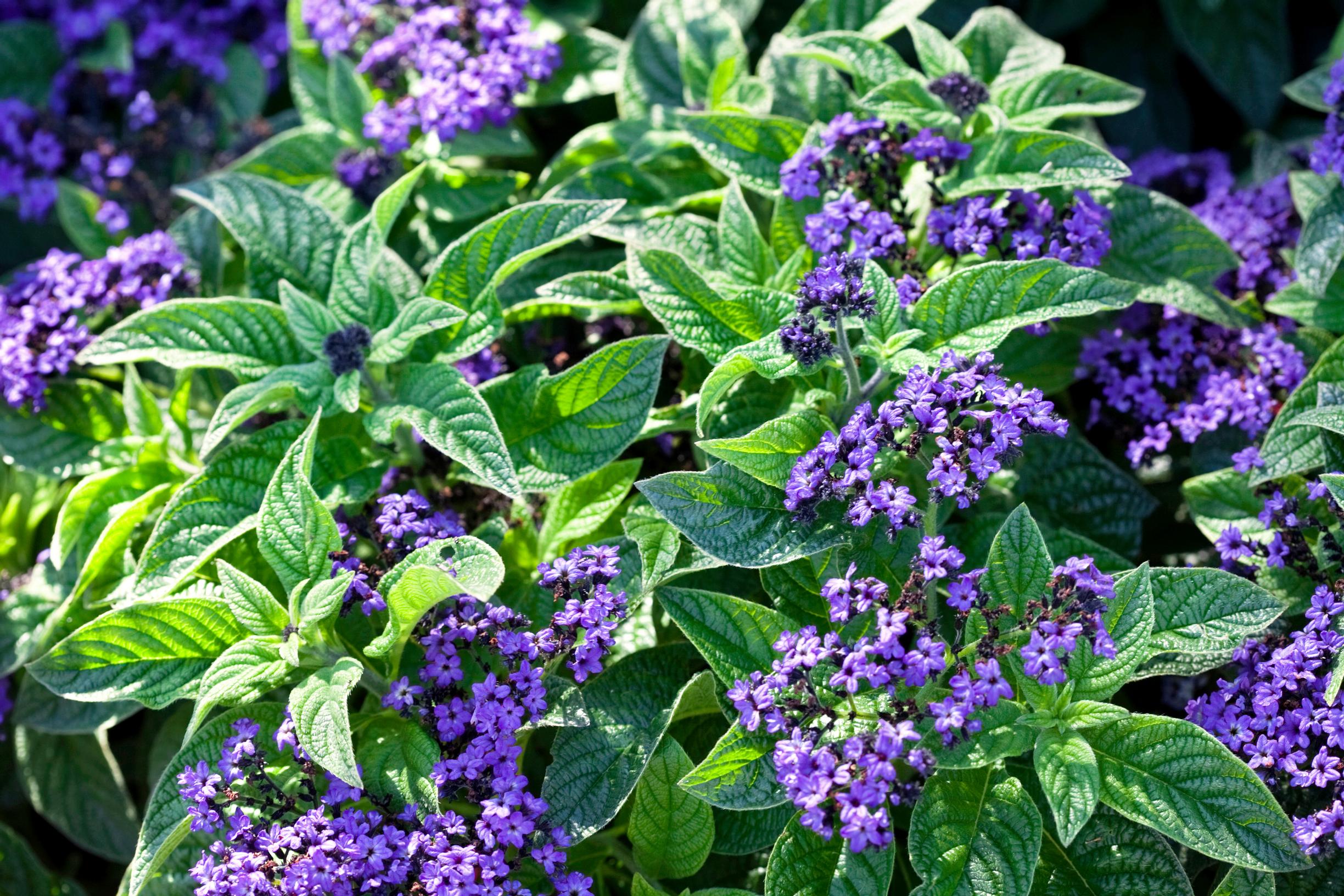
The flower color of heliotrope (Heliotropium arborescens) varies by variety, from white to deep purple. Plant heliotrope in a sunny or partially shaded location. If you remove spent blooms regularly, you can enjoy its flowers until fall. Regular fertilizing also ensures abundant blossoms. Avoid planting this frost-sensitive plant outdoors too early in spring.
Height: 30–50 cm.
Growth habit: upright.
7. Ornamental clover ‘Trifolium’
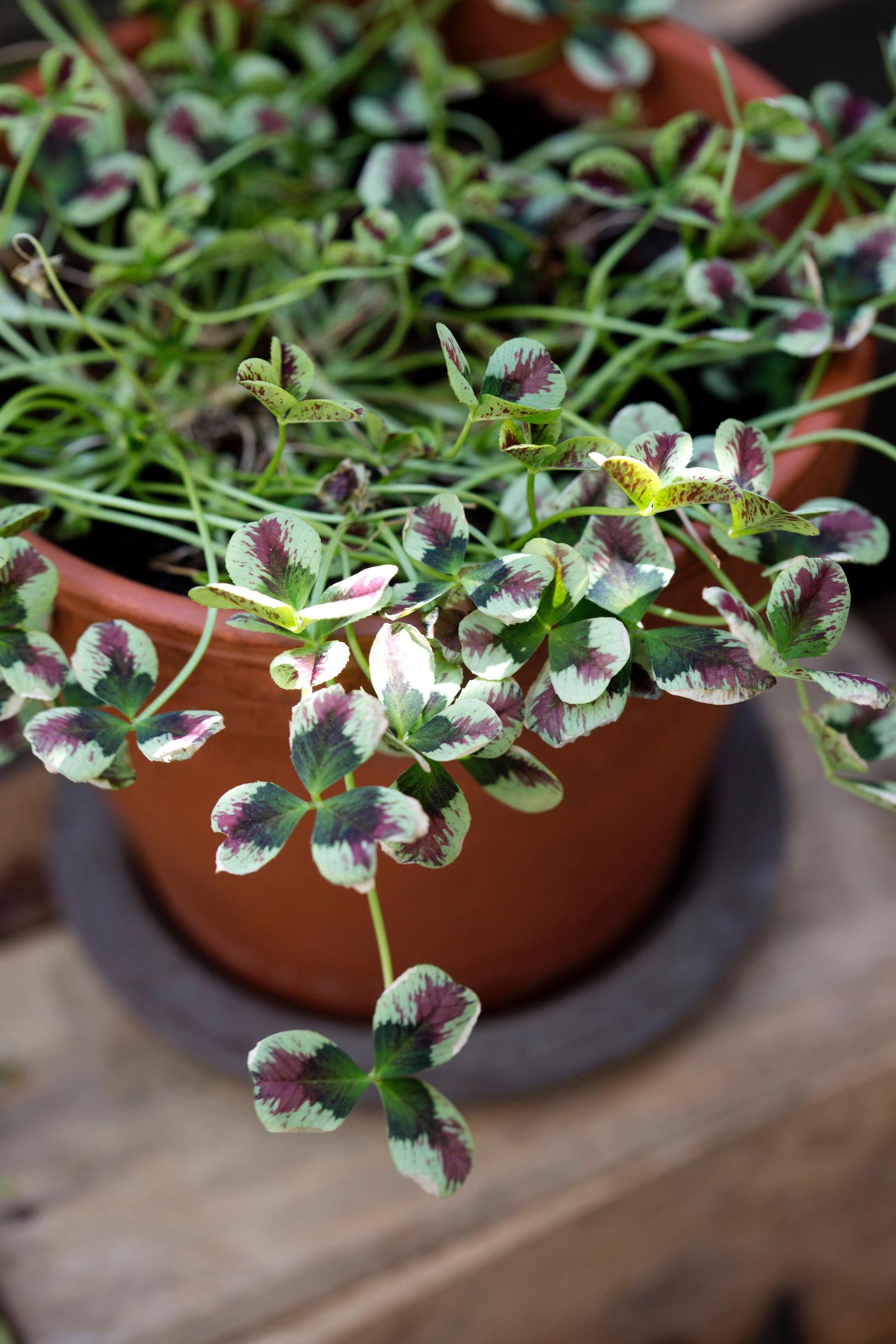
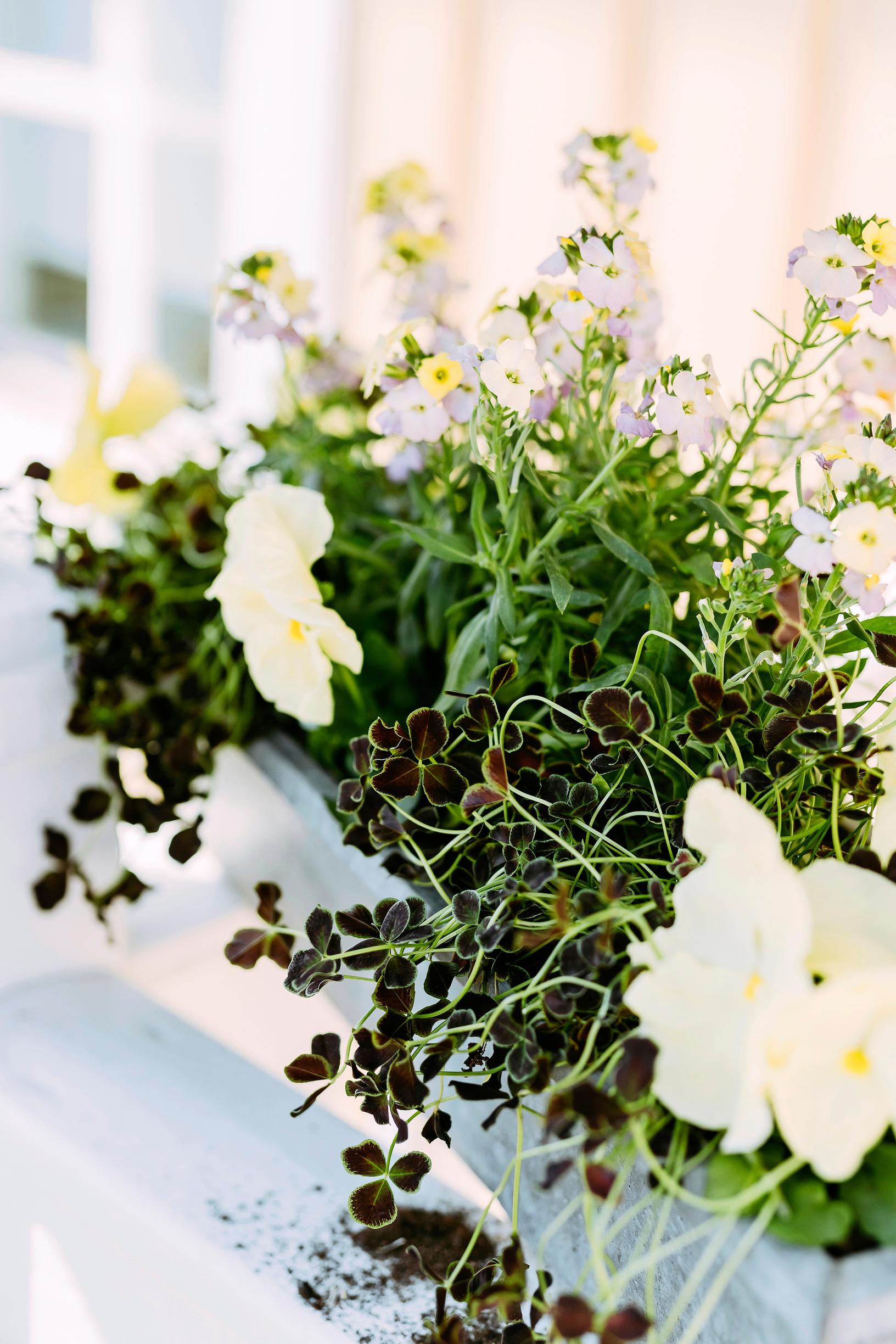
Derived from the familiar white clover, ornamental clovers captivate with their beautiful foliage. They are highly resilient and decorative in containers, either on their own or mixed among other plants.
These easy-care ornamental clovers love the sun but do well almost anywhere. Remove spent blooms and water regularly. If the plant becomes scraggly, cut it back, and it will soon regrow with a fresh appearance.
Height: 10 cm.
Growth habit: mound-forming, trailing.
8. Floss flower
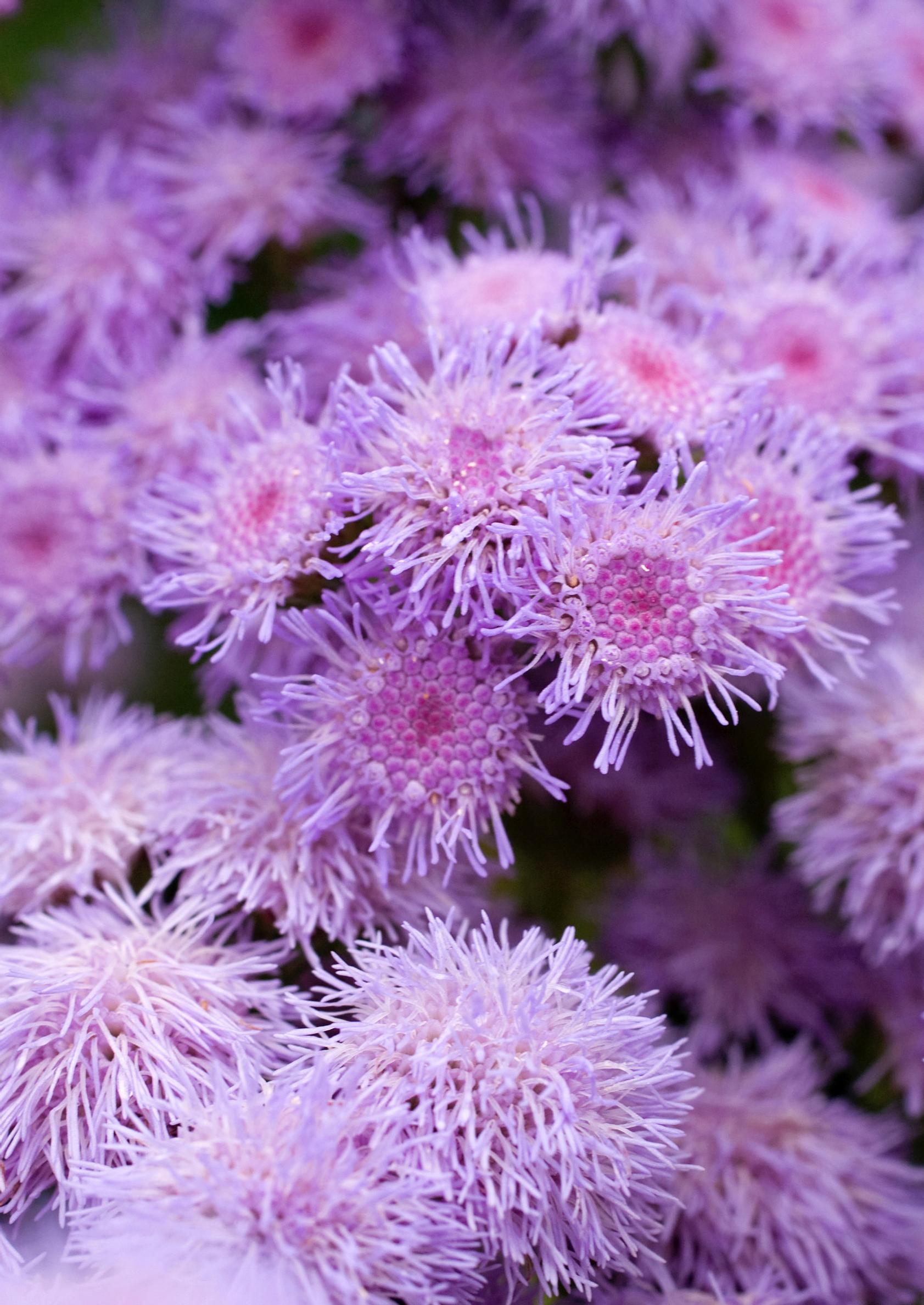
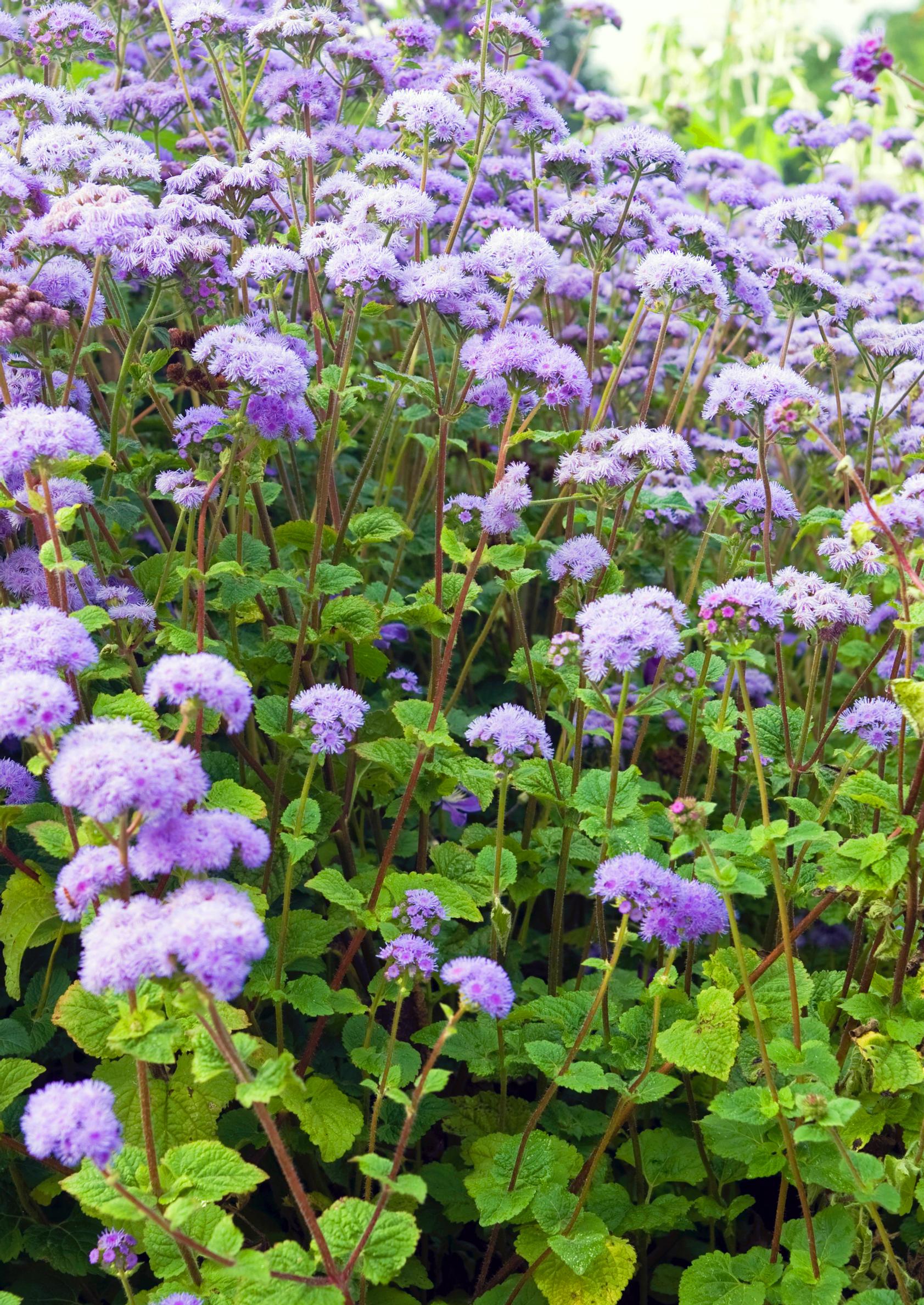
The feathery blooms of floss flower (Ageratum houstonianum) are velvety soft when the plant is in full bloom.
Plant floss flower outdoors only after the risk of frost has passed. Choose a bright or partially shaded spot. Because the plant is easily damaged by rain, try to keep it under cover. Water and fertilize it consistently so it continues producing new flower heads throughout summer. Pinch off any spent blooms to give new ones room to grow.
Height: 10–20 cm.
Growth habit: upright.
9. Sweet alyssum
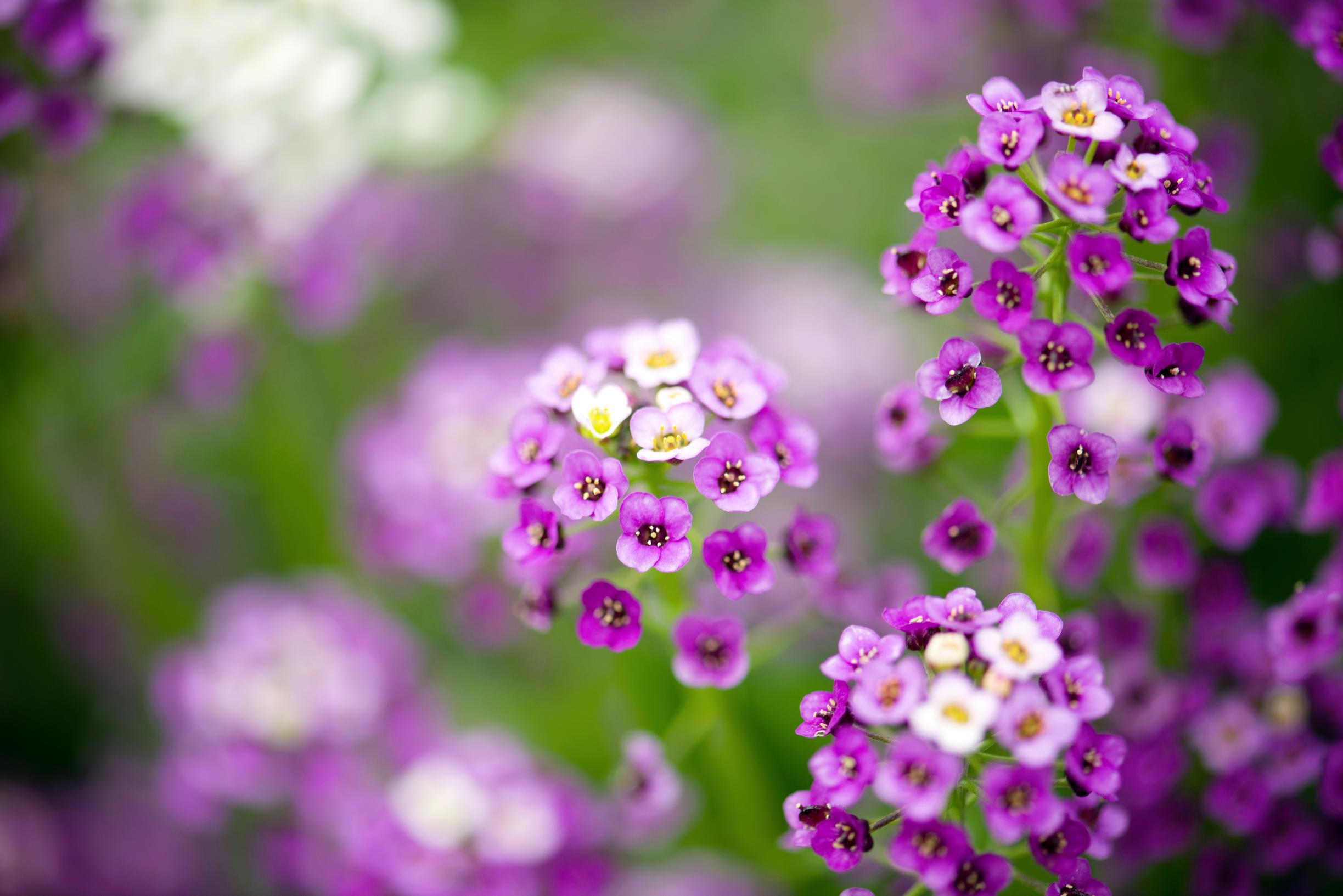
If you sow sweet alyssum seeds in the ground or in containers at the end of May, you can enjoy their delightful blossoms from July onward. Thanks to its bushy growth, sweet alyssum looks great in hanging baskets or at the edge of a mixed planting.
Keep sweet alyssum well-watered, as it will stop blooming if it dries out. If the plants grow straggly, cut the stems halfway back. They’ll soon revive and continue blooming!
Height: 10–20 cm.
Growth habit: mound-forming.
10. Purple bell vine
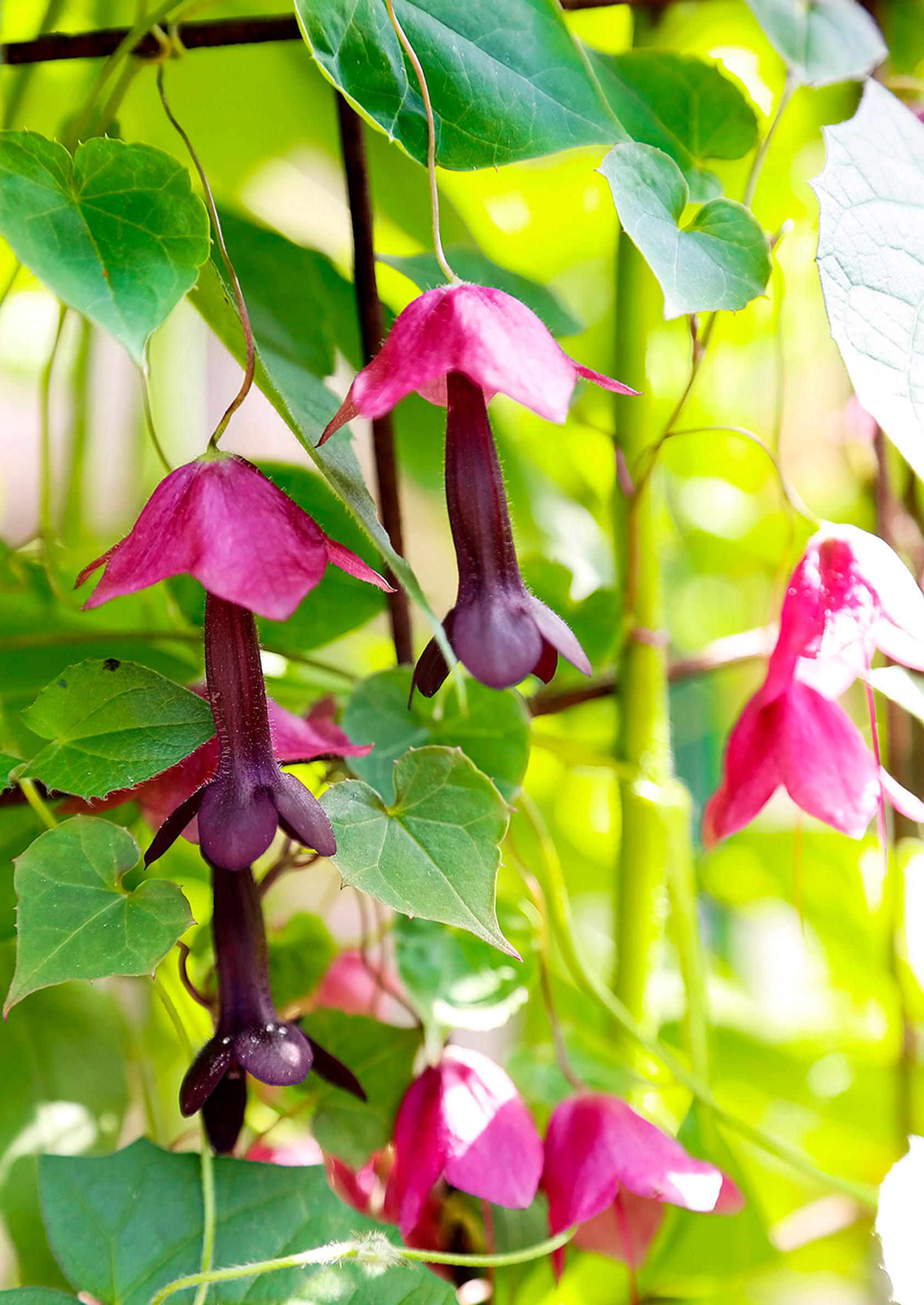
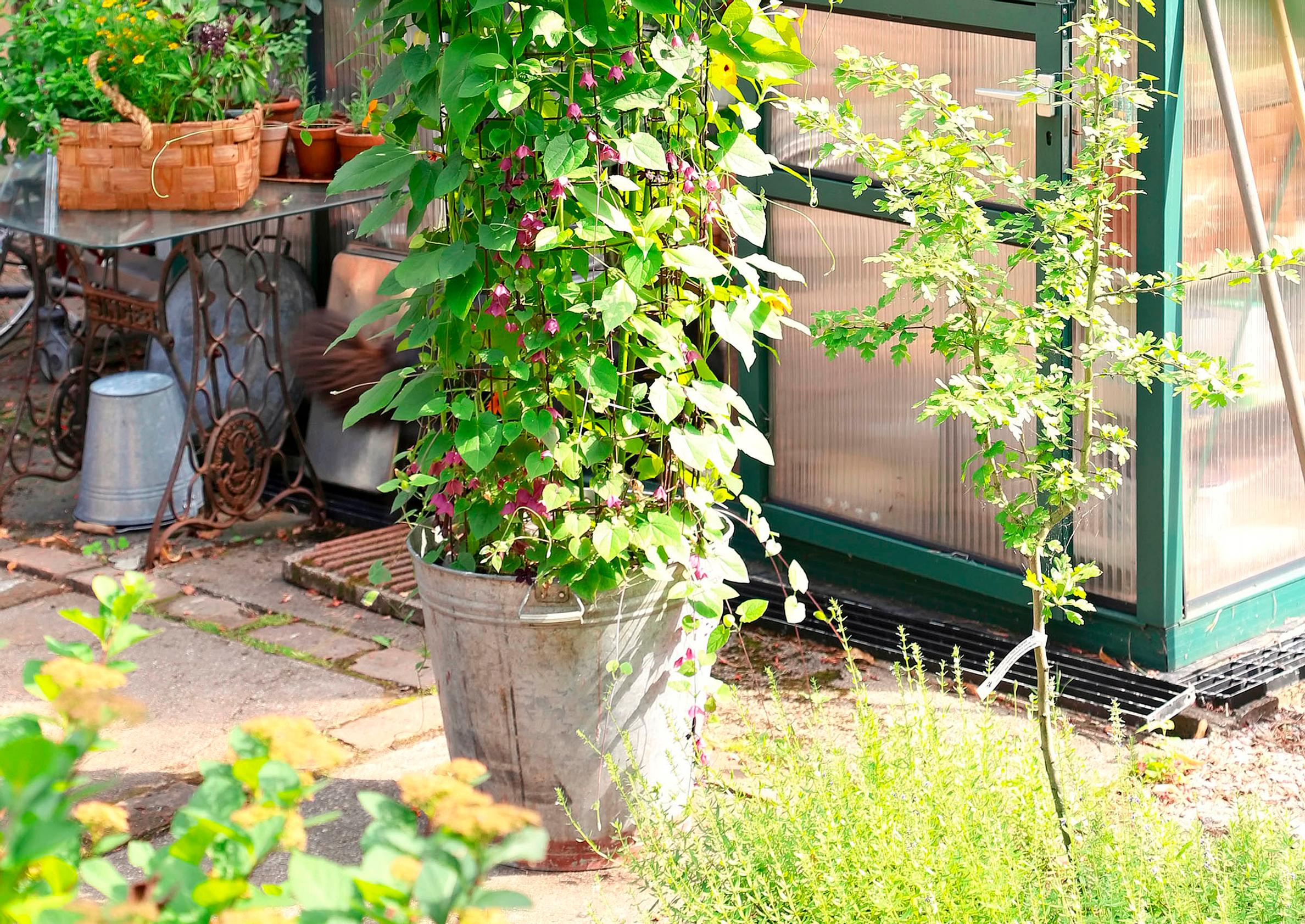
Striking purple bell vine is an excellent climbing summer flower to beautify a terrace or balcony. Its charm lies in its unusual blooms and pretty, heart-shaped leaves. In a warm summer, it can grow up to three meters long!
Give the vine a trellis to climb or plant it in a hanging basket to create a spectacular cascade of blooms.Read guidelines for caring for purple bell vine here!
Height: 100–300 cm.
Growth habit: climbing.
Tip!
Did you know that many summer flowers that love sunny or even shady locations can also flourish in partial shade? Check out these recommendations for sun-loving summer flowers here and these tips for shade-tolerant summer flowers here.
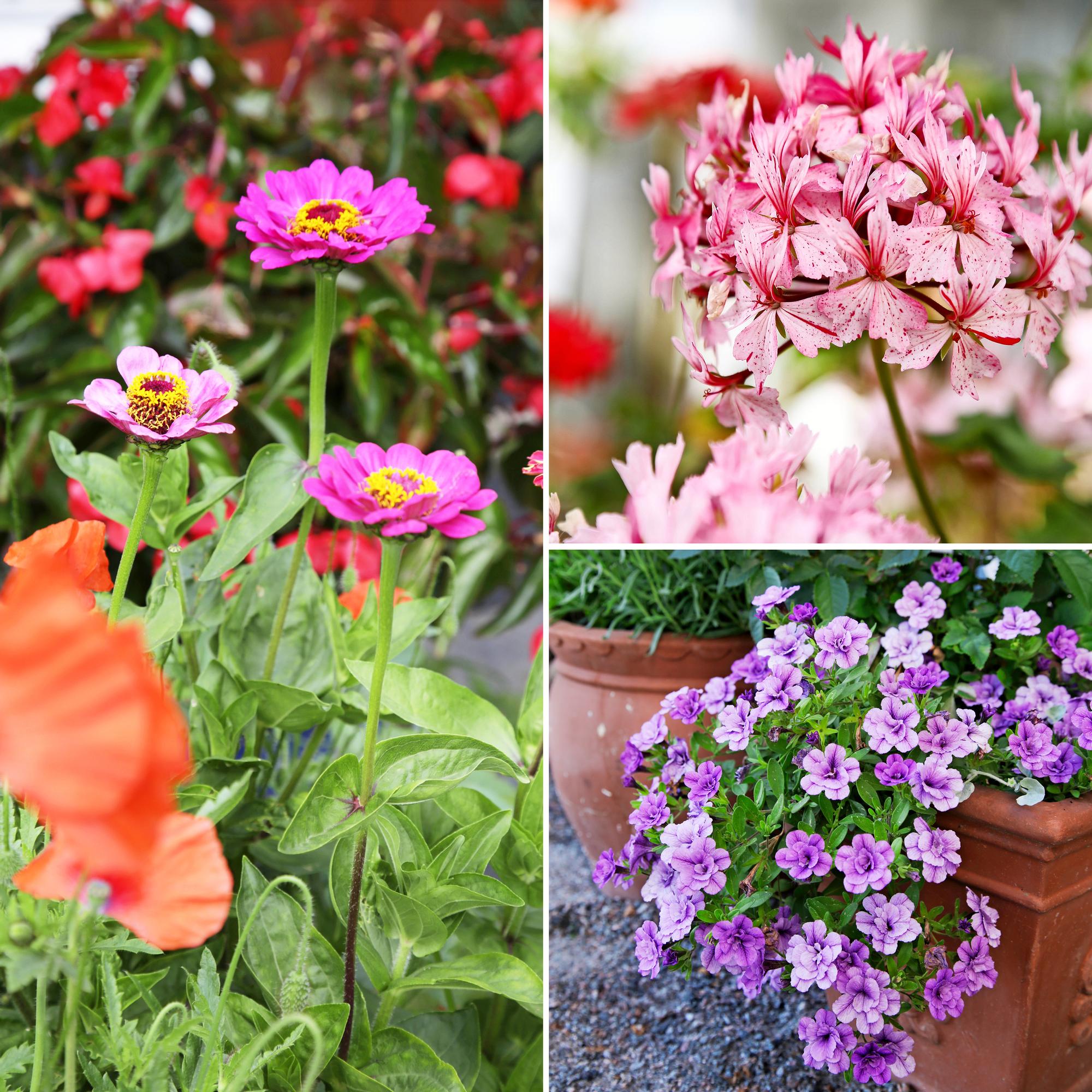
Edited on May 25, 2020: Added plenty of new photos and two new plants. Originally published on June 11, 2014.


